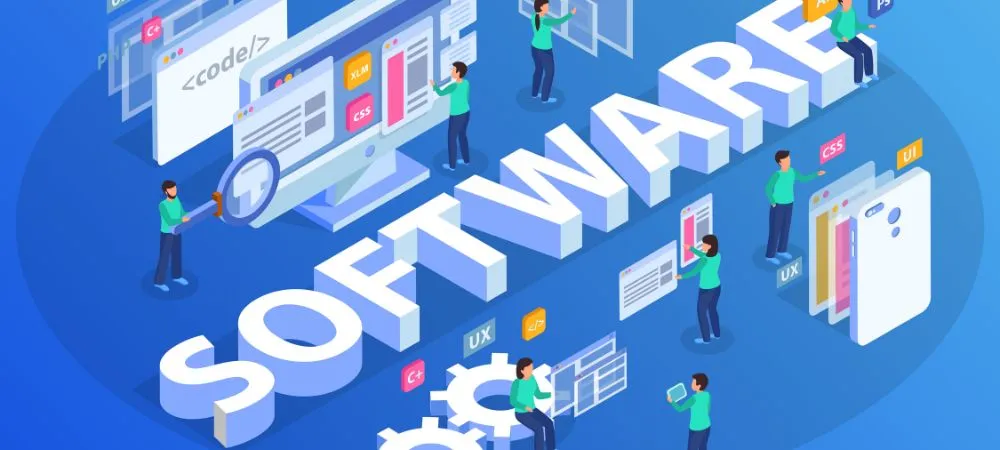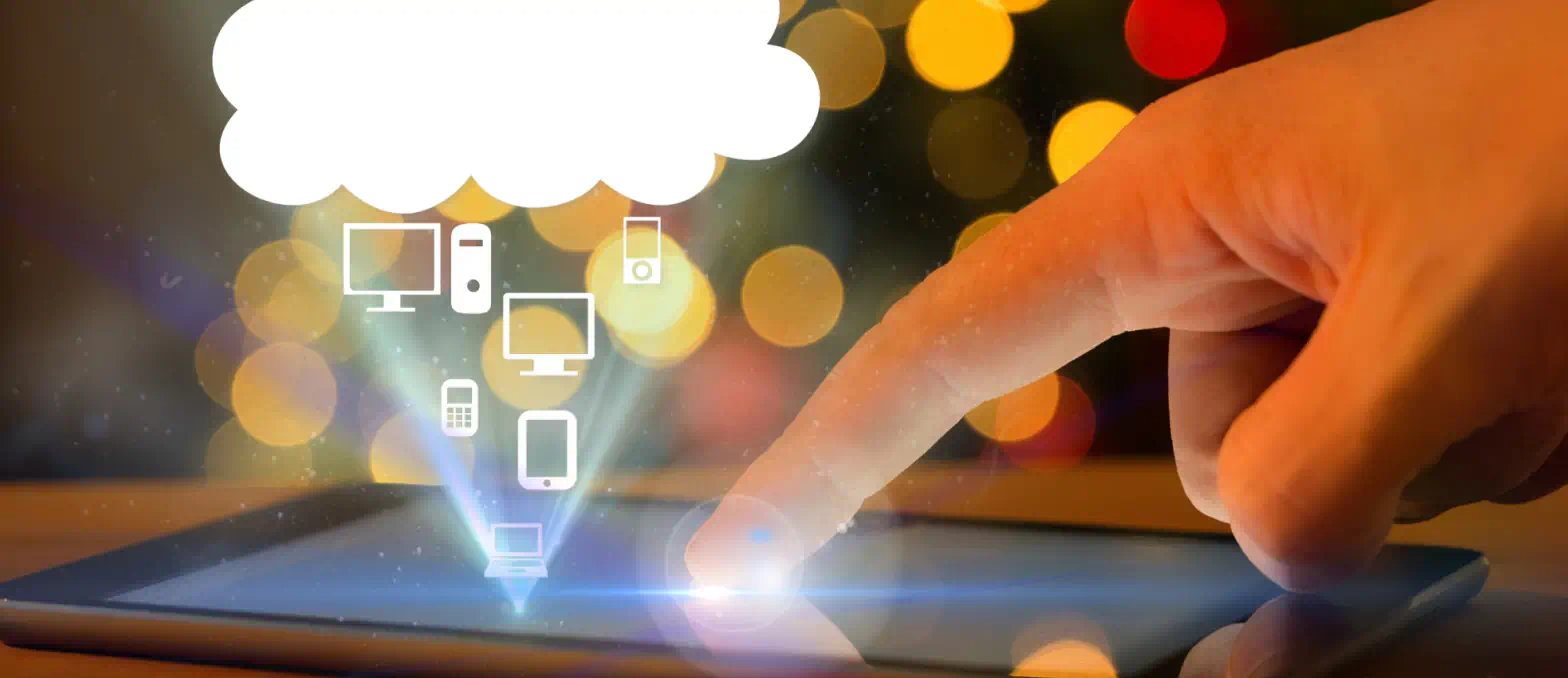The energy sector is transforming due to its integration with Internet of Things technology. As the demand for energy increases, the use of IoT in Energy management is also increasing. In energy management, the IoT is helping people use energy efficiently by saving energy, cutting costs, and lowering carbon emissions. From smart homes to modern utility networks, it is used everywhere. As energy usage increases, creative ways of managing energy with the help of IoT are also improving. With real-time data, IoT can help reduce energy consumption and save costs in both residential and business buildings.
This blog will discuss IoT’s key use cases, benefits, and challenges in Energy Management.
Table of Contents
Key Statistics
The worldwide Internet of Things in Energy Market size was estimated to reach about $35.2 billion by 2025. This with an annual growth rate of 11.8% from 2020 to 2025.
The global energy consumption has risen rapidly in recent times and is expected to rise further until 2045. Hydropower and renewable energy consumption will increase between 2045 and 2050. They will reach 30% of worldwide energy usage.
IoT technology will lead to an overall reduction in the consumption of electricity by 1.6 petawatts (PWh) in 2030 as well as a decrease in the use of fuel by 3.5 PWh and a cut in the use of water by 300 billion cubic meters.
Key Use Cases of IoT in Energy Management
The use cases of IoT in energy management aren’t restricted to one specific sector. Many applications of the technology can be beneficial commercially and personally.
Smart Metering
IoT-based smart meters help monitor electricity consumption. They allow users to gather information about energy use and send it to energy companies.
Smart meters can perform a wide variety of tasks. They can, for instance, record data on energy usage for every device within the house, allowing users to determine which device consumes the most energy. They can also automatically notify consumers when their devices are not in use.
Thanks to the use of smart meters, electricity companies can estimate electricity demand, track consumption patterns, and adjust supply according to these patterns.
Grid Management and Optimization
The Internet of Things plays a crucial role in grid management. Smart grids are IoT-based mainly in nature and it is believed that the Internet of Things is considered an important facilitator of smart grids. What is a smart grid exactly?
Smart grids are often described as autonomous distributed systems that can produce energy from a range of sources, including renewables and storage.
Demand Response Programs
Demand response programs enable utilities to handle significant power demand spikes without building or purchasing other power sources. In exchange, utilities typically provide facilities with lower electricity prices. Additionally, facility managers can avoid peak electricity demand charges that can be up to four times greater than normal rates.
Demand response programs are emerging as an essential resource base on which utilities depend to maintain grid power reliability.
Building Energy Management Systems (BEMS)
IoT-based Building Energy Management Systems (BEMS) can revolutionize energy management with real-time monitoring, remote control, and automation. Despite implementation challenges, their energy efficiency and environmental benefits make them attractive to building managers.
Regulating Air Flow with Ventilation on Demand
Ventilation systems are essential in ensuring the quality of indoor air thermal comfort and energy efficiency of structures. Traditional ventilation systems typically work on a predetermined timetable, irrespective of the type of air or occupancy requirements.
However, IoT-based air quality systems equipped with demand control (DCV) technology can optimize the flow of air and energy by adjusting to changing occupancy, air quality, and temperature information.
Predictive Maintenance for Energy Equipment
Predictive maintenance of energy equipment IoT energy management refers to the use of Internet of Things (IoT) sensors to constantly monitor the condition of energy assets such as transformers, turbines, and generators.
It allows the early identification of possible issues and proactively scheduling maintenance to avoid unexpected breakdowns, optimize efficiency and reduce energy losses. It uses real-time data to determine when maintenance will be required before breakdowns occur, thus maximizing uptime and lowering cost.
Energy Usage Analytics
In energy administration, “Energy Usage Analytics” within IoT is the process of collecting data in real-time from devices and sensors throughout a facility and analyzing the data to gain insight into the energy consumption patterns and identify inefficiencies.
It also helps make informed choices to optimize energy consumption, cutting costs and increasing sustainability by automatically adjusting based on usage patterns and other external factors such as occupancy or weather conditions.
Machine Monitoring
Solar PV Optimization
One of the most important applications for solar PV optimization within IoT is managing energy using sensors-equipped solar panels and intelligent inverters. It helps control and regulate the power output based on current conditions in the weather as well as panel performance data and energy demand.
Thus maximizing the production of energy and optimizing the utilization of solar power in grid or building systems, all controlled by the interconnected IoT platform.
Battery Energy Storage Management
The energy storage market is a relatively new market that has been attracting massive interest in the current era of increasing IoT applications in smart homes and IoT applications in the concept of smart cities.
In general, energy storage lets users be energy-resilient and self-sufficient in power outages or other potentially dangerous scenarios. Smart energy storage provides an efficient and controlled energy backup while also giving residents control over their energy usage.
Energy storage systems allow residents to make better-informed decisions about what amount of energy to use off-grid and what load to safeguard. The integration of smart storage systems will assist people who rely on renewable energy sources such as solar or wind in efficiently managing the power generated.
Furthermore, they’ll be able to limit the excess power and get the best performance of their energy system.
Simply put, energy storage can be described as an IoT energy-saving device that allows residents to control the quantity and source of their energy and respond to any issues that arise.
Virtual Power Plants
VPPs (or, more commonly, VPPs) are cloud-based solutions that combine various energy sources in one place. They then run their energy markets as a flexible and unified resource or sell their energy as a reserve in the system.
VPP ecosystem could comprise solar power plants, battery storage devices, wind turbines, electronic vehicle charging stations, demand-and-response management centers, and smart meters. The most fundamental hardware components of a VPP include being connected to the Internet of Things, including smart meters, thermostats that are smart, and advanced management software.
Some of the major participants are power utilities, renewable energy operators, retailers and energy producers, VPP operators, and building managers. The VPP’s members are connected to the central control system through a remote-control unit. This central system manages, coordinates, and regulates all assets.
Sustainable Infrastructure
One key application of sustainable infrastructure IoT managing energy is the development of “smart grids” where IoT sensors can monitor consumption of energy in real-time. It allows the dynamic adjustment of the distribution of power based on the fluctuations in demand, maximizing energy consumption as well as integrating renewable resources such as wind and solar energy more efficiently.
It results in an environmentally sustainable energy grid that includes features such as automated load balance, demand response, and fault detection for quicker maintenance.
Smart Appliances and Devices
Reduced energy consumption will be the most effective method of saving energy. Systems like thermostats, smart lighting systems, and new-generation HVAC systems based on sensors and more can be automated to maintain optimal conditions in offices, homes, and other areas while maximizing energy use.
The systems are fitted with various sensors (light levels, CO2 levels, humidity, and motion) that can dynamically adjust the power consumption profile to changing conditions, thereby avoiding wasted energy.
Electric Vehicle (EV) Charging Management
An IoT-based EV charge management device uses sensors and connectivity to track and optimize charging in real-time. It ensures efficient energy use, load balancing across chargers, and adaptive adjustments based on grid conditions and renewable power. This reduces costs, minimizes grid impact, and provides convenient charging for EV owners.
Energy Theft Detection
Water and Wastewater Treatment Optimization
In wastewater and water treatment facilities, IoT technology can improve energy management through continuous monitoring of important parameters such as flows, water quality, and equipment performance. It allows operators to pinpoint areas of significant energy consumption and implement real-time adjustments to the treatment process, which ultimately leads to lower energy use and cost savings.
Carbon Footprint Tracking
Application for tracking carbon footprints in IoT application in energy management is to use sensor networks to track the energy consumption in real-time across different equipment and systems inside the facility or building. It allows for an in-depth analysis of the patterns of energy use and the identification of areas for improvement.
Eventually implementing these changes help in cutting down on carbon emissions through optimizing the energy consumption by occupancy, environmental conditions, and operational requirements.
Microgrid Management
Microgrid management as part of IoT for energy management aims to control and optimize the operation of a distributed, localized power system using connected devices and sensors that adapt energy storage, generation, and consumption according to changing demand and availability of renewable energy and ultimately improving reliability, energy efficiency, and cost savings. It can implement load shifting, peak shaving self-sufficiency, and seamless grid integration during power outages.
Automated Energy Controls
Digital energy management systems allow households, businesses, energy professionals, and government officials to monitor and manage the processes of their resources and supply chain assets. They typically consist of control panels, meters sensors, tools for analytics and applications, etc.
Additionally, sensor-equipped assets such as household boilers and heavy equipment in industrial facilities can monitor the load level in real-time and predict simultaneous overheating damage or power outages. Preventing damage to expensive equipment, such as heavy machinery, could lead to substantial savings.
Through information analytics and data, your team will be able to manage energy consumption and maintain equipment performance and wear and tear at the right level to ensure the longevity of your equipment.
Energy-Efficient HVAC
HVAC, which stands for heating, air conditioning, ventilation, and heating, accounts for most of the energy used in commercial and residential buildings. However, with the help of smart HVAC systems, it’s now possible to track and adjust energy consumption in real time.
HVAC intelligent energy management system that uses IoT is based on tracking indicators such as humidity, temperature, and light. These systems allow for modifying energy consumption parameters by splitting the building into distinct zones.
Benefits of Integrating IoT in Energy Management
Monitoring consumption and production information is only one step towards energy efficiency. Another factor is the use of the Internet of Things to manage energy. They benefit the entire electricity chain, including distributors, consumers, and power plants. Let’s look at the significant benefits of IoT in Energy management in more detail:
Increased Efficiency
One of the main benefits of using IoT for energy management is its potential to improve energy efficiency and save money on heating and energy bills. Continuous monitoring of energy consumption makes it easier to determine the times or places of the day when energy consumption is higher than average and also improves energy efficiency.
Cost Savings
IoT-powered energy management systems aids organizations in reducing operating and energy costs and reduces the need for manpower. You can anticipate the consumption patterns and then budget and spend.
Enhanced Sustainability
IoT is vital to making energy management more sustainable. It increases energy efficiency and assists in introducing renewable energy sources, reducing greenhouse gas emissions.
- Integration of Renewables: IoT systems can easily link renewable energy sources like wind and solar into the power grid, allowing us to use clean energy and fewer fossil fuels.
- Environment Monitoring: Devices connected to the Internet monitor the conditions of the environment and emit. This data helps ensure the sustainability of our efforts and meets the requirements.
Real-Time Insights
Another advantage of using IoT devices to manage energy is the ability to monitor and regulate energy consumption in real-time. Through all devices connecting to the internet, individuals and businesses can actively monitor their energy usage and make better-informed decisions about modifying consumption patterns. Creating thresholds and limits that can be automatically activated instead of manually is also possible.
While it’s beneficial in private spaces, the real-time ability to monitor and manage your energy is helpful for commercial buildings with large spaces and industrial establishments with high energy consumption. With immediate access to the data on energy consumption, Managers can quickly spot and rectify any unnecessary energy usage, resulting in operating efficiency and cost reductions.
Improved Reliability
IoT in Energy management increases reliability through the ability to monitor energy systems in real time. This allows the early detection of problems and malfunctions, proactive maintenance, and rapid response to disturbances, ultimately making it easier to minimize downtime and ensure the stability of energy supply throughout the grid.
This is accomplished by using sensors and devices connected to the grid, which collect information about the energy consumption and performance of the system, which allows for proactive intervention and optimizing resource allocation.
Support Green Energy Initiatives
IoT in the energy and utility sectors helps transition towards greener energy by seamlessly integrating renewable sources like solar power and wind energy into the grid. By incorporating renewable energy information into management tools, IoT helps organizations optimize the distribution of energy, reduce dependence on fossil fuels, and align with sustainability objectives.
Ensure Regulatory Compliances
IoT solutions for managing energy allow the analysis of tools, enabling businesses to ensure they adhere to the rules in the energy industry. This means that the administration of certifications is made easier.
Challenges in Implementing IoT in Energy Management
While IoT brings significant improvements in the process of energy management, however, it also poses many challenges.
Integration with Legacy Systems
Due to design, some older energy management systems can easily exchange data with IoT devices. The wide range of IoT devices and standards makes it difficult to interoperate using newer technologies. Be cautious. IoT network planning, device evaluation, and system EMS redesigning might be required to handle advanced scenarios.
Scalability and Network Reliability
As networks grow and data volumes increase, IoT device management becomes more complex. To ensure maximum system availability and scalability, you must invest in the right software stack to support data collection, remote device management, and constant security surveillance.
Data Protection Issues
Conclusion
IoT technology is becoming more important in the energy industry and provides smart solutions for energy management. By using IoT’s capabilities, you can dramatically enhance energy efficiency, decrease expenses, and improve sustainability. With IoT App Development Services, energy tracking, preventive maintenance, and optimizing energy supply, power management is changing.
Monitoring and controlling energy consumption using real-time data and remote-control features can improve efficiency and sustainability. Whether it’s optimizing energy consumption at home or streamlining the operations of commercial structures, IoT offers a wide variety of advantages.
How to Leverage the expertise of A3Logics team to develop IoT apps that best fit your needs?
A3Logics, a digital-based IoT development company that develops products, aims to aid today’s entrepreneurs in creating their apps as swiftly as possible, enabling them to generate revenues. We know the challenges they face. This method assists businesses and ensures the safety of contractors by allowing them to look ahead, tackle market challenges, and plan for the next steps of their plans.
FAQs
What are the most popular energy management IoT solutions?
Here are a few of the most amazing ways to utilize IoT in Energy management:
- Smart commercial structures.
- Energy monitoring and smart metering.
- Smart grid control.
- Fleet management of electric vehicles.
- Democratic energy access
- Smart HVAC systems
- Predictive maintenance of industrial equipment
What are the future trends in IoT for Energy management?
Here are some intriguing new trends for the future of IoT to manage energy:
- Blockchain
- IoT powered with 5G Technology
- IoT Security
- Traffic Management
- IoT-Empowered AI Applications
- Digital Twins
- Smart Cities
- Metaverse
- Voice Activated IoT Devices
- Edge Computing
What is the role of IoT in power systems?
In power systems and power grids, the Internet of Things (IoT) is a key element in monitoring, controlling, and optimizing different aspects of the electric grid, such as generation, distribution, transmission, and consumption. Interconnected devices and sensors collect data that can aid in decisions, thereby improving reliability, efficiency, and grid stability.








